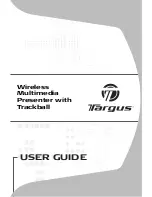
BOBCAT Hardware User’s Manual
Imperx, Inc.
Rev. 2.0.2
6421 Congress Ave.
11/20/2012
Boca Raton, FL 33487
+1 (561) 989-0006
147 of 265
regions. The original camera transfer function is linear and maps the data 1:1. The
new (corrected) transfer function has one or two sets of variable (X, Y) and based
on the relation between the variables a correction of certain image regions can be
achieved. The camera has two built in correction modes.
3.2.2.1 Single Point Correction
The simplest image enhancement can be achieved by a linear modification
of the original transfer function. If the image brightness is weighted
towards a particular region (dark or bright), this region needs to be
suppressed, and the less present (the flat) region needs to be enhanced.
The range of the correction is determined by the location of the break
point (X1, Y1) – Figure 3.4. This point (X1, Y1) divides the camera
transfer function into two regions (two lines). The slope of these lines (the
angle between the X axis and the line) determines the power of the
correction. If the angle is less than 45
O
degrees, the grayscale range will be
suppressed. If the angle is more than 45
O
degrees, the grayscale range will
be enhanced. The user can set the optimum (X1, Y1) values.
Input signal
O
u
tp
u
t
s
ig
n
a
l
O
rigi
na
l TF
New
TF
X1
Y1
Figure 3.4 – Single point TF correction.
3.2.2.2 Multi Point Correction
If the image brightness is weighted towards two particular region – dark
and bright, and in the same time mid region has a low dynamic range a
multi point correction will produce much better results compare to the
single point correction. The range of the correction is determined by the
location of a pair of the break point (X1, Y1) and (X2, Y2) – Figure 3.5a.
The camera transfer function is divided into three regions (three lines),
which allows multiple grayscale regions to be corrected independent of
each other. If the angle is less than 45
O
degrees, the grayscale range will be
















































